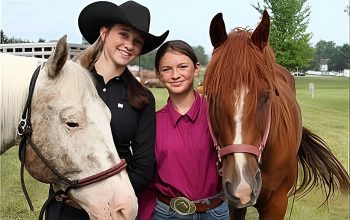For avid anglers, the idea of catching dozens of fish in a short timeframe and being able to keep all of them is usually appealing. However, this is not necessarily true when it comes to the bothersome yellow bass. Though they can be fun to catch, yellow bass are considered a nuisance fish and can be detrimental. And recently, their prevalence at Lake Cornelia is causing concern, so much so, that the Iowa DNR is taking some big steps to restructure the lake.
According to DNR resources, yellow bass live in natural lakes, reservoirs and the backwaters of large rivers, being widespread in the Mississippi River. They are not native to Lake Cornelia. In fact, they were first captured there during studies only back in 2006. Over the next years, the population exploded. The DNR noted that by 2017, the yellow bass numbers in Cornelia were among the highest observed for natural lakes in the state.
The high numbers were confirmed just a couple weeks ago during a yellow bass tournament at Cornelia. Wright County Conservation Director Eric Rector explained that the DNR conducted a count based on the fish caught at that tournament. Comparing numbers to a study involving previously marked fish, it was found that there are well over a half million yellow bass in the lake. Rector said this translates to over 370 pounds of the fish per acre.
Rector explained that this translates into a big problem for the lake as a whole. In short, the entire fish population of the lake is “stunted.” DNR Fisheries Biologist Scott Grummer says that yellow bass have become the dominant species in the lake, to the detriment of other species. A DNR study that counted yellow bass in the lake a few years ago also noted that they “found poor condition and growth of bluegill, black crappie, and yellow perch and that seasonal food items consumed were limited and of poor quality.” Rector added, anecdotally, that many walleye caught seem to be skinny and look malnourished as well. The DNR concludes, “The stunting of yellow bass had caused devastating effects that cascaded to the entire Lake Cornelia fishery.”
Because of this problem, the DNR recently announced that they are working to take significant action to improve the fishery. This is no small task. As the DNR study called “Research Study 7070” explains, “Stunting due to exceeding density thresholds [the yellow bass infestation], often becomes so severe that these systems require complete renovation to restart the fishery.”
However, the DNR strategy for Cornelia plans to take a less drastic approach. Rather, they hope to combine various strategies to be used together to improve the lake. In short, the study lays out: “The purpose of this study is to evaluate the effectiveness of an enhanced predator stocking regime and yellow bass removal to restructure the fishery population dynamics … at Lake Cornelia by June 30th, 2027.”
This plan involves years of data-gathering, studying and work. Grummer explained that the next few years will continue with gathering information on fish populations of all kinds. Based on that data, experts will then decide what approaches to take. These may include a variety of yellow bass removal approaches such as targeted electrofishing, netting them using different methods or perhaps a low-dose of the chemical rotenone. Grummer added that there would be a lot of studying before the chemical application would be considered.
Then in the years after the removal efforts, the study calls for the introduction of “several species of adult predators.” These will likely include northern pike, muskellunge and walleye with others like largemouth bass, flathead catfish, and blue catfish being considered. In addition to adult predator stocking, juvenile walleye and muskellunge will also be stocked at different intervals.
After the predator stocking, the DNR will do diet sampling from those species to check to see to what level they are eating yellow bass or anything else. The study also stipulates that starting in 2022, the yellow bass predator fish will be protected from harvest by implementing special regulations. There will be a no harvest regulation for pike, muskie, largemouth bass, flathead and blue catfish. Walleye will be able to be kept but at a reduced bag limit of three and a 17-22 inch slot limit. With these efforts over the next several years, Grummer says they hope to see a severe reduction in yellow bass numbers and improvement in the fishery overall.
Rector said county conservation staff is very excited about the management plan. “Right now, the lakes in the county don’t really have good fishing,” he emphasized. “You can catch a lot of fish, but they’re not that great. If this study works, we hope to see a diverse fishery where people can come and have successful fishing experiences.”
Avid fisherman and pro-staff member for various companies, Randy Bieghler, is also liking the ideas behind the management strategy. He has also organized the Yellow Bass Crash Big Mass tournament on Cornelia for three years. One year, the fishermen took 12,000 fish during the tournament. Bieghler said, “I think this is a good thing. The lake really needs it. It would be great to see it improve because it’s a fun lake to fish.”
In the meantime, Grummer reiterated that the study and management strategy will be a long process. He noted that lake visitors and residents should expect a strong DNR presence over the next few seasons. They will often be there at night for electroshocking.
Rector added that people should continue to enjoy the lake as they have been as this process unfolds. He also reminds fishermen to not return yellow bass to the lake, no matter their size.
In the end, if the yellow bass management plan succeeds, Rector thinks it will be a win for the area. He admitted in the short-term, it might require some patience due to no harvest regulations and smaller bag limits on different fish, but in the long-run, it will be greatly beneficial. “If things improve, it will be a win for the campground, the lake and the area as a whole,” he asserted.



